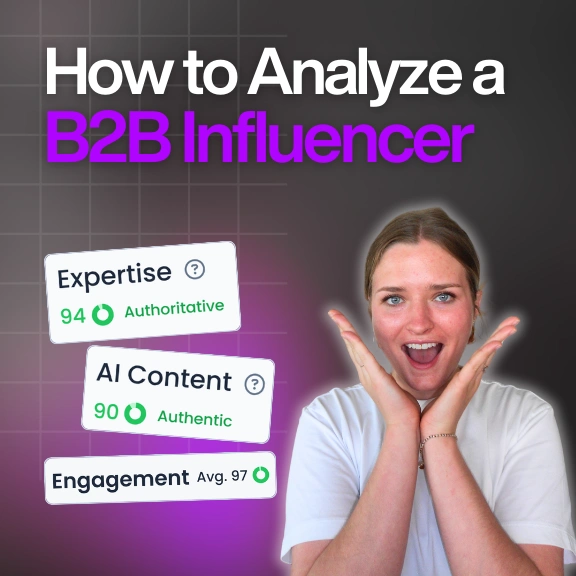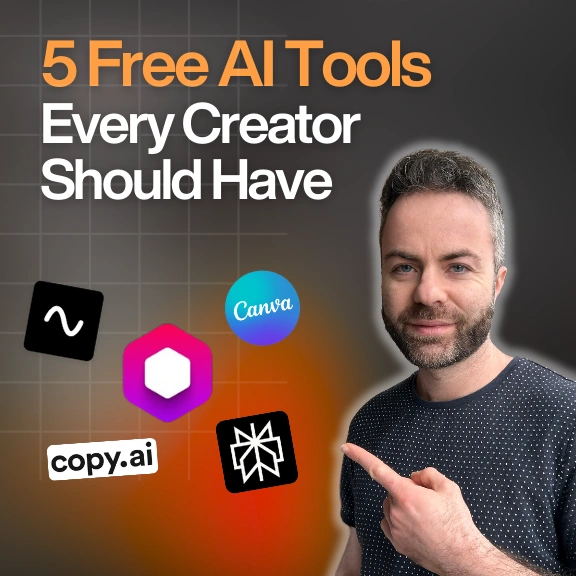Blog & Articles
Your ultimate ressource for the creator economy
Methodology & Rankings
About Favikon, rankings, tools & much more.
Insights
The recipe behind Favikon's viral & coveted rankings.
Free tools to power your influencer marketing workflows.
See Favikon users' success stories.
Get access to all Favikon rankings.
Become a Partner
Become an Affiliate
About the team behind Favikon
The place to talk creator economy, together


Featured Rankings

Here is the Top 50 Rising Video Creators on LinkedIn. Video is quickly becoming the platform’s most powerful format, with creators gaining more reach and engagement than ever. As Gen Z grows its presence and tools like BrandLink and Thought Leader Ads support content creation, LinkedIn is doubling down on video. This ranking, made in partnership with OpusClip, celebrates the creators leading this shift and aims to inspire anyone ready to start sharing through video.

Here is the Top 50 Rising Video Creators on LinkedIn. Video is quickly becoming the platform’s most powerful format, with creators gaining more reach and engagement than ever. As Gen Z grows its presence and tools like BrandLink and Thought Leader Ads support content creation, LinkedIn is doubling down on video. This ranking, made in partnership with OpusClip, celebrates the creators leading this shift and aims to inspire anyone ready to start sharing through video.
.png)

Josie Renna is a content strategy expert with a passion for helping creators navigate the ever-evolving digital landscape. Specializing in effective content creation techniques and platform-specific strategies, Josie provides insights to empower creators and brands to thrive online. With a deep understanding of algorithm dynamics and audience engagement, Josie shares actionable tips for optimizing content performance across various platforms.
Check Brand DealsHow to Research Influencer Demographics and Psychographics
In today's competitive influencer marketing landscape, understanding your target audience goes far beyond surface-level metrics like follower count. Successful brands are diving deeper into influencer demographics and psychographics to create campaigns that truly resonate with their ideal customers. This comprehensive guide will walk you through the essential strategies and tools needed to master influencer audience research.
Understanding the Difference: Demographics vs. Psychographics
Demographics: The Foundation Layer
Demographics represent the quantifiable characteristics of an audience. These include age, gender, location, income level, education, and occupation. While demographics provide a solid foundation for understanding who your audience is, they only tell part of the story.
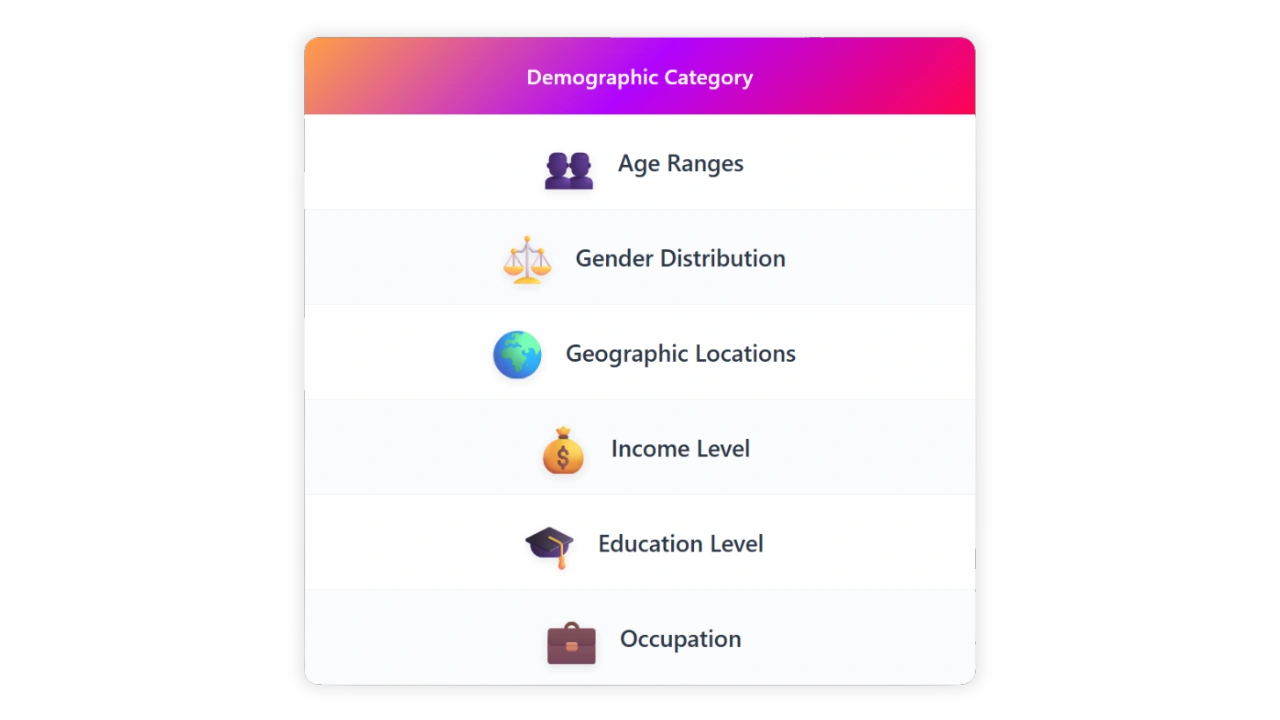
According to Phyllo's comprehensive guide, demographic analysis helps brands "evaluate age, gender, location, education level, and income level to tailor campaigns effectively." This data serves as your starting point for audience segmentation.
Psychographics: The Deeper Connection
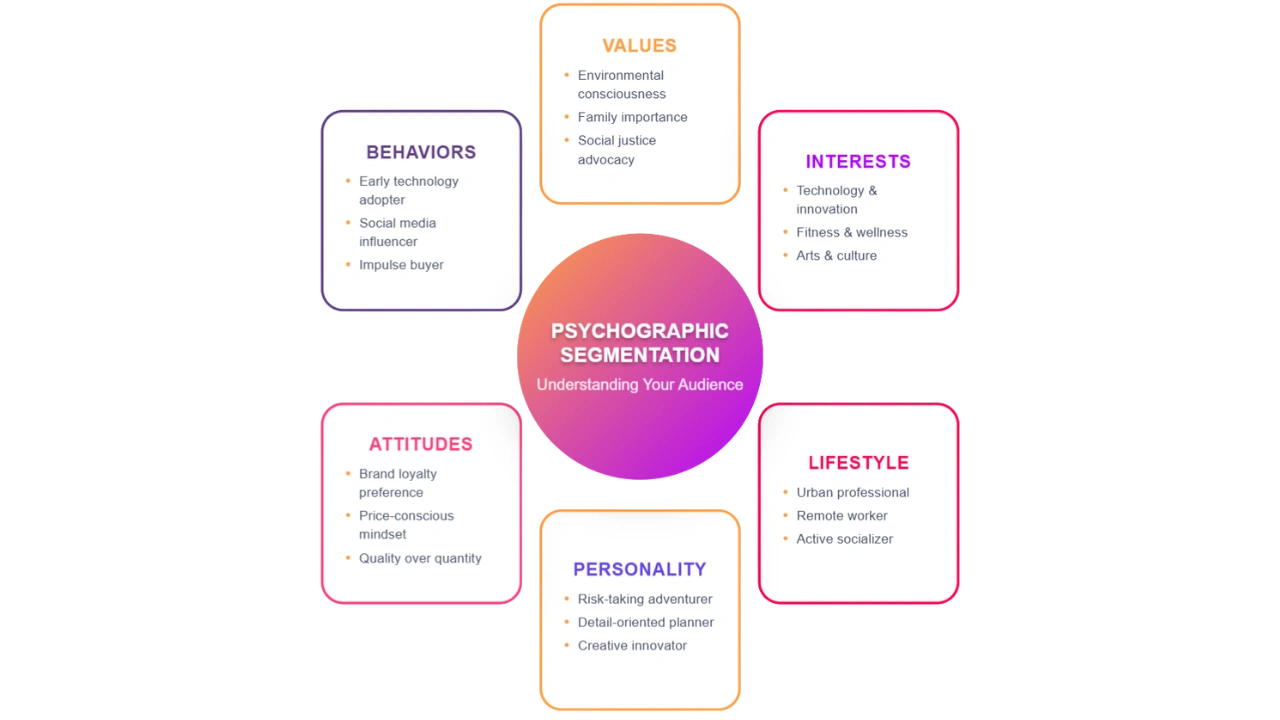
Psychographics delve into the psychological aspects of consumer behavior, including values, interests, attitudes, lifestyle choices, and purchasing motivations. As Qoruz emphasizes, "psychographics help understand why audiences engage with content, focusing on lifestyle choices, purchasing triggers, and content consumption habits."
Industry expert Sarah Johnson from Social Media Today notes, "While demographics tell you who your audience is, psychographics reveal why they make purchasing decisions. This 'why' is what drives authentic engagement and conversions."
Essential Methods for Demographic Research
Social Media Analytics Deep Dive
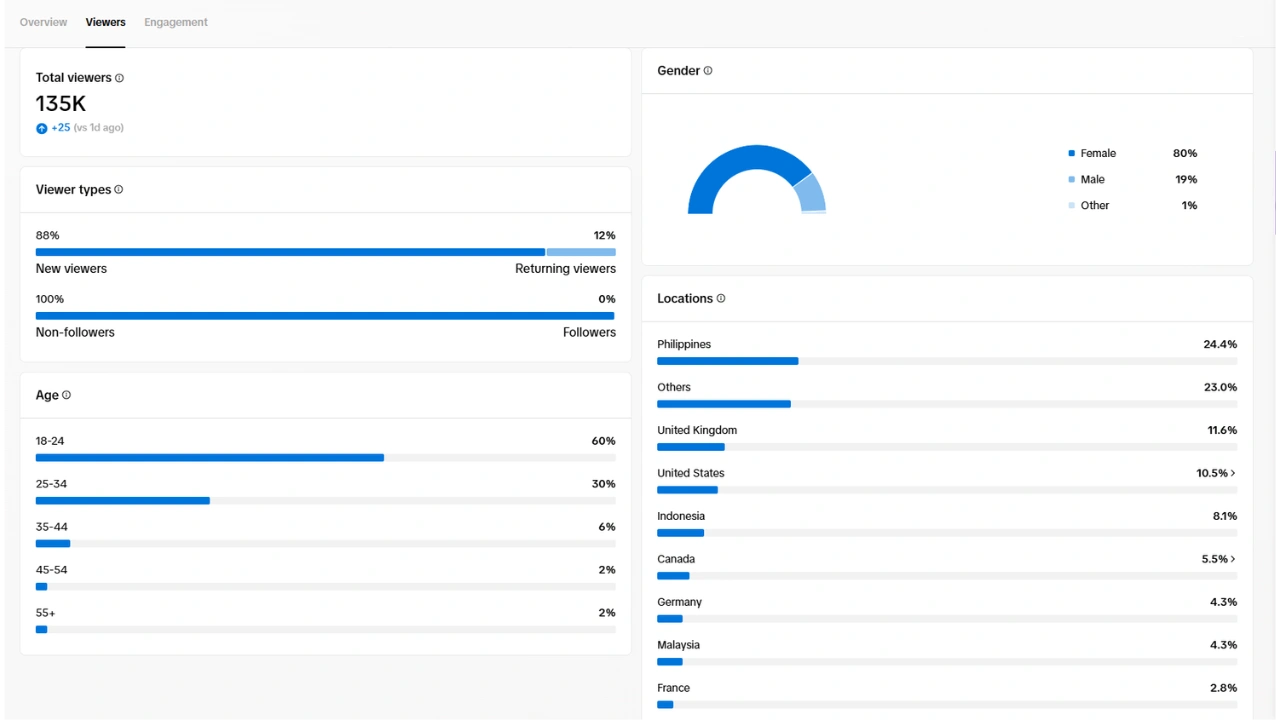
Start with native platform analytics. Instagram Insights, YouTube Analytics, and TikTok Analytics provide detailed demographic breakdowns of an influencer's audience.
Look for:
- Age distribution patterns
- Gender split percentages
- Geographic concentration
- Peak activity times
- Device usage preferences
Third-Party Analytics Tools

Professional tools offer more comprehensive demographic analysis. Platforms like Hootsuite, Sprout Social, and specialized influencer marketing tools provide enhanced demographic insights that go beyond what native analytics offer.
Cross-Platform Analysis
Don't limit your research to a single platform. An influencer's audience demographics can vary significantly across different social media channels. A beauty influencer might have a predominantly female audience on Instagram but a more balanced gender split on YouTube.
Advanced Psychographic Profiling Techniques
Social Listening and Sentiment Analysis
Monitor conversations around your brand, competitors, and industry topics. Tools like Brandwatch and Mention help identify:
- Common pain points and challenges
- Preferred communication styles
- Values and beliefs
- Lifestyle preferences
- Purchase decision factors
Engagement Pattern Analysis
Analyze how audiences interact with different types of content. FasterCapital research shows that "psychographic segmentation enhances influencer marketing by understanding audience interests, opinions, and lifestyles."
Look for patterns in:
- Comment sentiment and topics
- Share motivations
- Save behaviors
- Story interaction rates
Content Consumption Habits
Study what type of content resonates most with the audience:
- Video vs. image preferences
- Long-form vs. short-form content
- Educational vs. entertainment focus
- User-generated content engagement
Tools and Platforms for Comprehensive Research
All-in-One Influencer Marketing Platforms
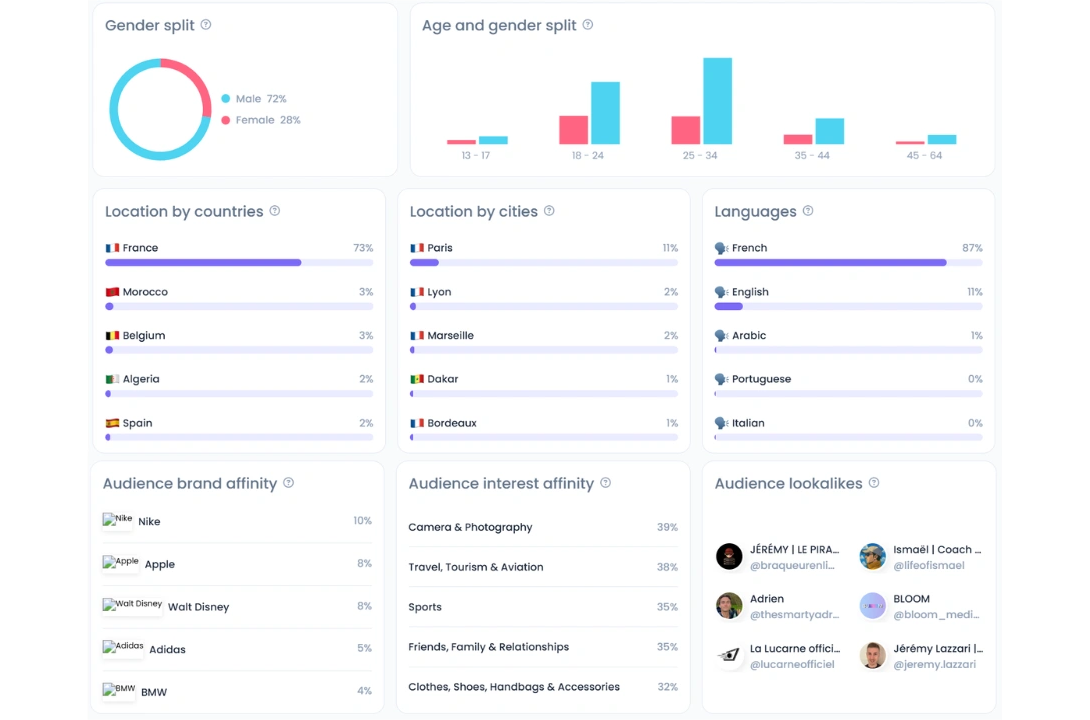
Modern platforms like Favikon provide comprehensive demographic and psychographic analysis in one dashboard. These tools aggregate data from multiple sources to give you a complete picture of an influencer's audience quality and characteristics.
Survey and Interview Platforms
Direct audience research through surveys can provide invaluable psychographic insights. Shopify's research methodology suggests using "surveys, interviews, and social media analysis" to collect psychographic data effectively.
Tools like SurveyMonkey, Typeform, and Google Forms can help you gather:
- Purchase motivations
- Brand preferences
- Lifestyle choices
- Values and beliefs
AI-Powered Analytics Solutions
Artificial intelligence is revolutionizing audience analysis. AI tools can process vast amounts of social media data to identify psychographic patterns that would be impossible to detect manually. Platforms like Favikon use AI to analyze not just who follows an influencer but also how those followers think, behave, and engage.
By combining demographic details with psychographic insights such as interests, values, and content preferences, Favikon helps brands find influencers whose audiences truly align with their messaging and goals.
Industry Expert Insights and Best Practices
Marketing strategist David Chen from Influencer Marketing Hub states, "The most successful campaigns we've seen combine demographic targeting with psychographic insights. Brands that understand both the 'who' and the 'why' of their audience see 3x higher engagement rates."
Key Recommendations from Industry Leaders:
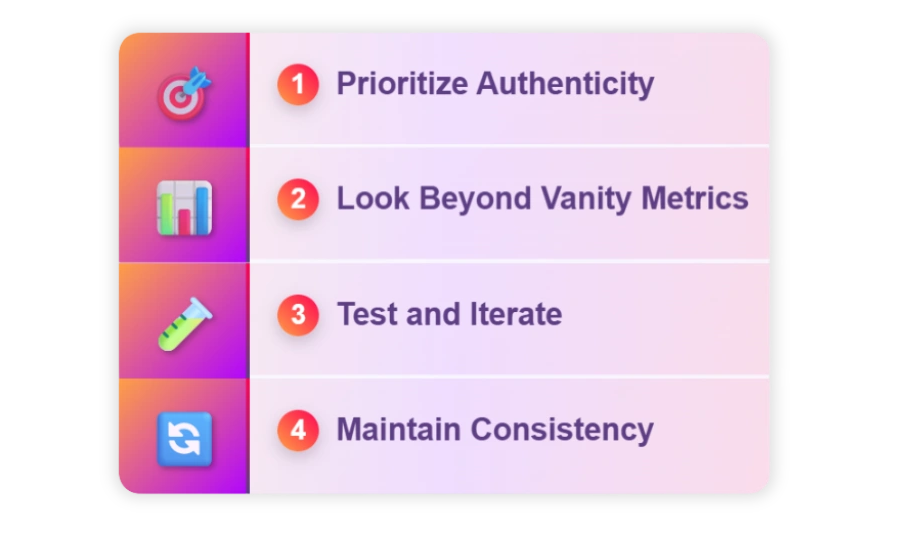
- Prioritize Authenticity: Choose influencers whose values align with your brand's mission
- Look Beyond Vanity Metrics: Focus on engagement quality over quantity
- Test and Iterate: Use A/B testing to validate your demographic and psychographic assumptions
- Maintain Consistency: Ensure your messaging resonates across different audience segments
Current Trends in Influencer Demographics Research
Micro-Segmentation
Brands are moving beyond broad demographic categories to create highly specific audience segments. This trend toward micro-segmentation allows for more personalized and effective campaigns.
Real-Time Analytics
The demand for real-time audience insights is growing. Brands want to understand how audience demographics and psychographics shift in response to current events, trends, and seasonal changes.
Privacy-First Research
With increasing privacy regulations, researchers are developing new methodologies that respect user privacy while still providing valuable insights.
Implementing Your Research with Favikon
Favikon's advanced analytics platform makes demographic and psychographic research seamless. The platform provides:
- Comprehensive audience demographic breakdowns
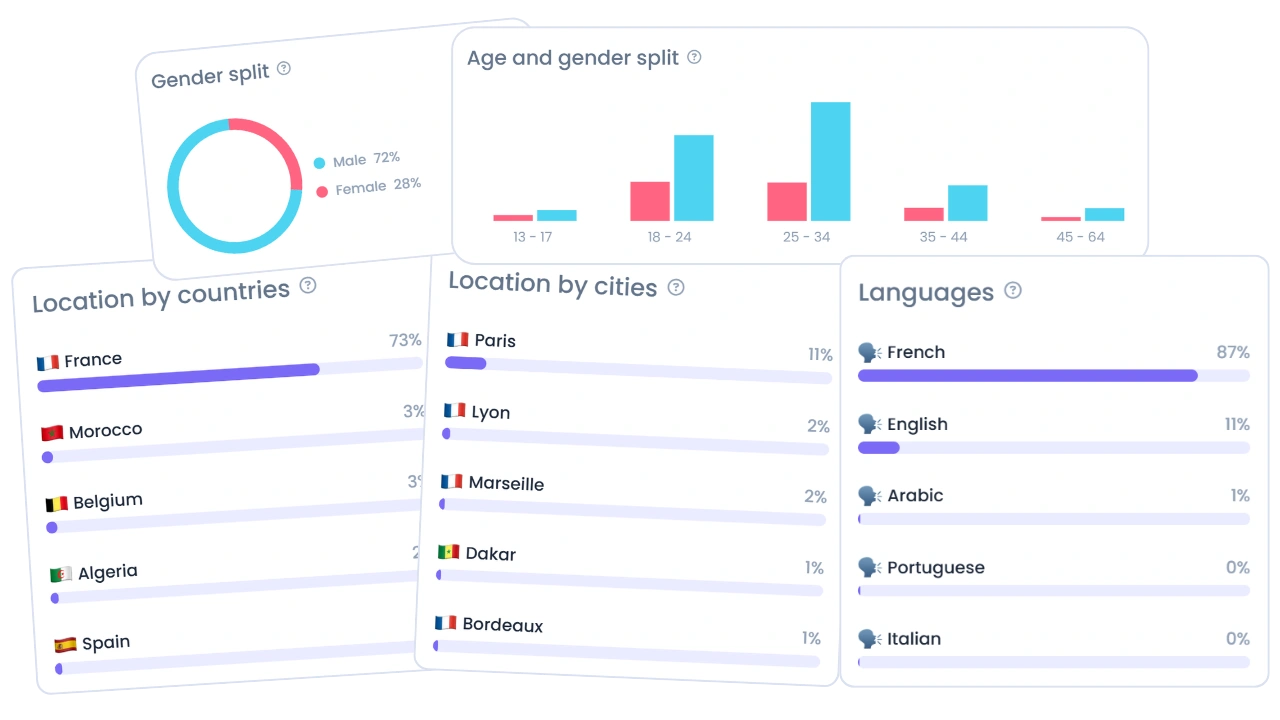
- Psychographic insights
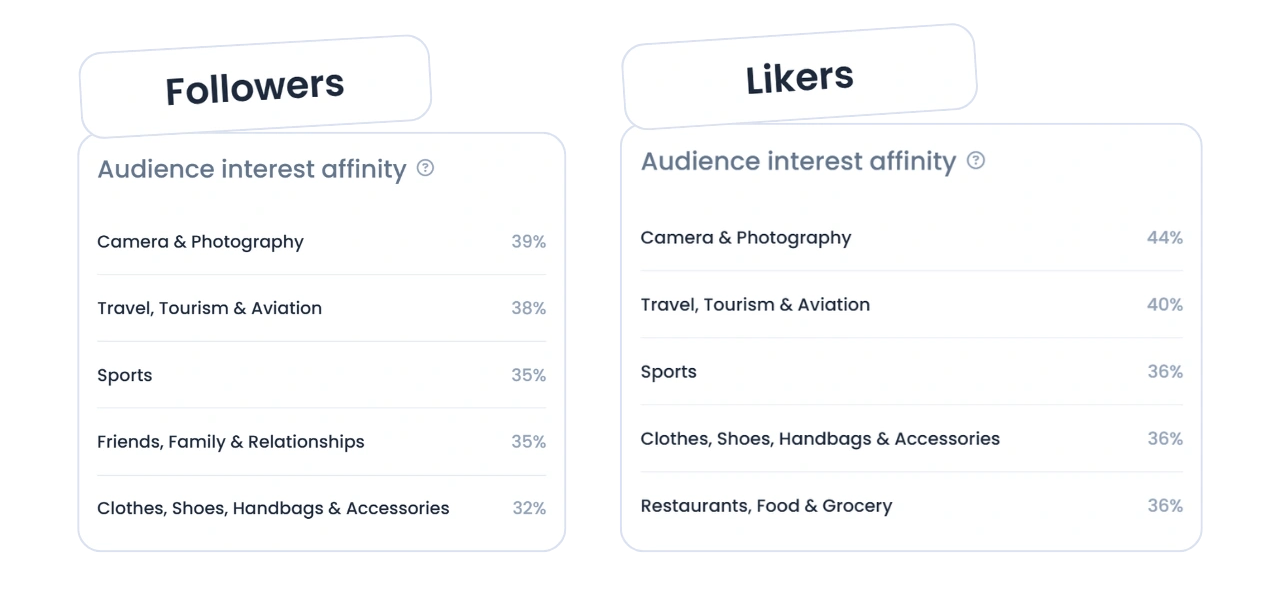
- Cross-platform audience analysis
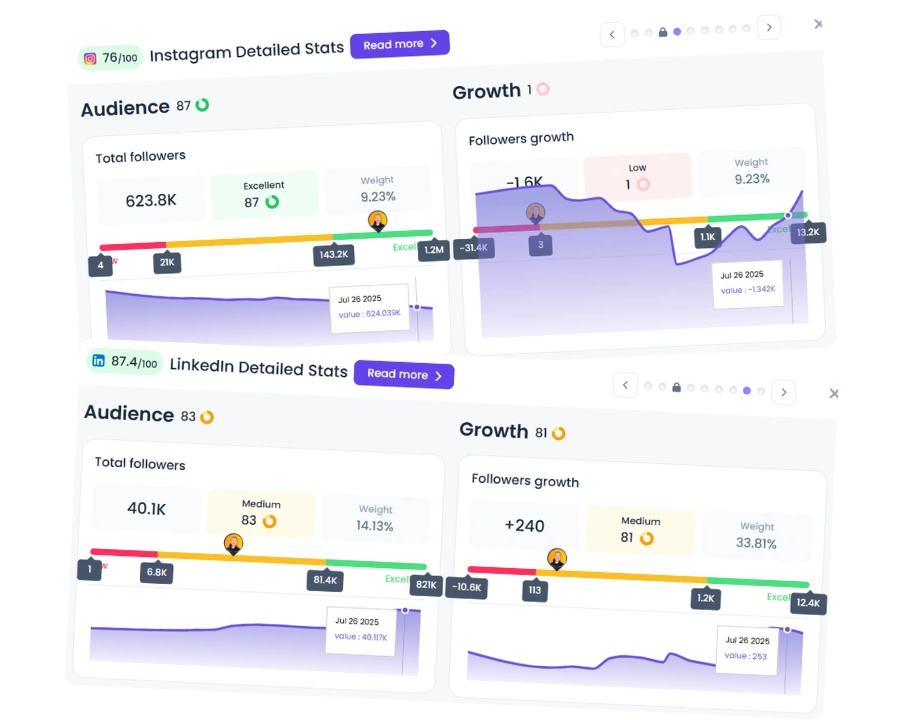
- Real-time audience quality scoring

To get started with Favikon's audience research tools, simply upload your target influencer list and let the platform's AI analyze their audiences across multiple dimensions.
Measuring Success and ROI
Key Performance Indicators
Track these metrics to measure the effectiveness of your demographic and psychographic research:
- Engagement rate improvements
- Conversion rate increases
- Brand sentiment changes
- Audience growth quality
- Campaign ROI
Long-Term Audience Development
Focus on building long-term relationships with audiences that match your ideal customer profile. This approach leads to higher lifetime customer value and stronger brand loyalty.
Conclusion
Mastering influencer demographics and psychographics research is essential for modern marketing success. By combining traditional demographic analysis with deeper psychographic insights, brands can create more authentic, engaging, and profitable influencer partnerships.
The key is to use a combination of tools, methodologies, and platforms to build a comprehensive understanding of your target audience. Start with demographic foundations, layer in psychographic insights, and continuously refine your approach based on performance data.
Ready to elevate your influencer research game? Explore Favikon's comprehensive audience analysis tools and discover how data-driven insights can transform your influencer marketing strategy.
Also See 👀
🏆HOW TO USE ADVANCED SEARCH FILTERS TO FIND PERFECT BRAND MATCHES
LAUNCH AND MANAGE INFLUENCER CAMPAIGNS WITH EASE
HOW DOES FAVIKON RANK INFLUENCERS?
Related Articles
See all the articlesResources











.png)
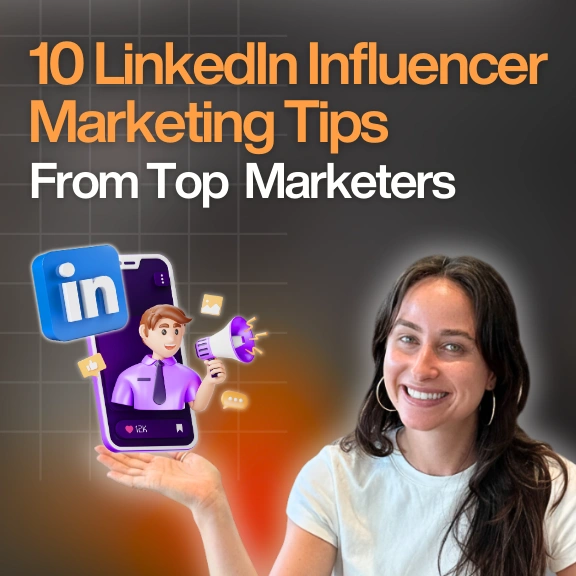




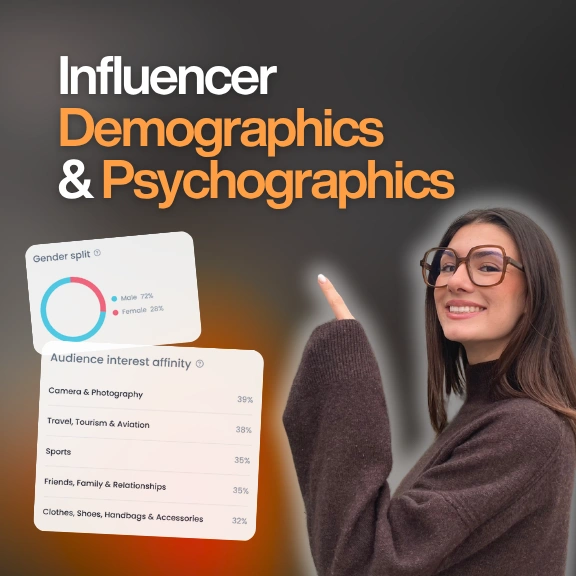
.png)
